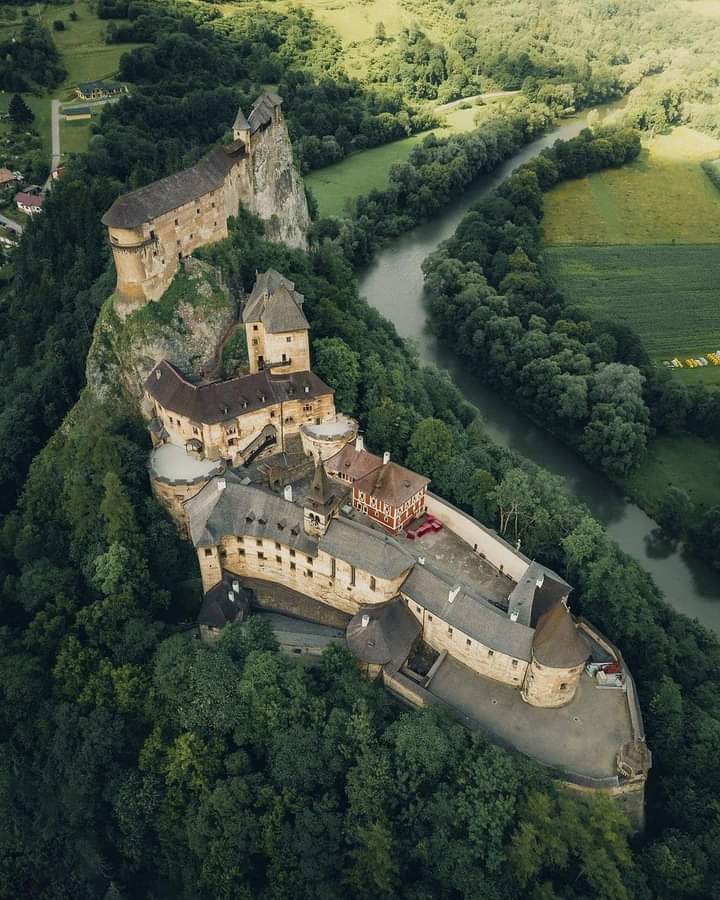
Orava Castle (Slovak: Oravský hrad, German: Arwaburg, Hungarian: Árva vára) is a castle situated on a high rock above Orava river in the village of Oravský Podzámok, Slovakia. The castle was built in the Kingdom of Hungary, with the oldest parts being built in the thirteenth century and the most recent parts in the early seventeenth century. Many scenes of the 1922 film Nosferatu were filmed here, the castle representing Count Orlok's Transylvanian castle. Orava Castle stands on the site of an old wooden fortification, built after the Mongol invasion of Hungary of 1241. Its history follows a familiar pattern of construction, destruction, reconstruction, fire, various ownerships and territorial squabbles. The original design was in Romanesque and Gothic style; it was later reconstructed as a Renaissance and Neo-Gothic structure, hugging the shape of the 520-metre spur on which it perches. The mining magnate Thurzo family, who took charge in the mid-16th century, were responsible for a great deal of rebuilding work, although its present form was not finalised until 1611. It burned down again in 1800, after which it was no longer used as a residence. After a period of dilapidation dating until World War II, the castle became a national monument.
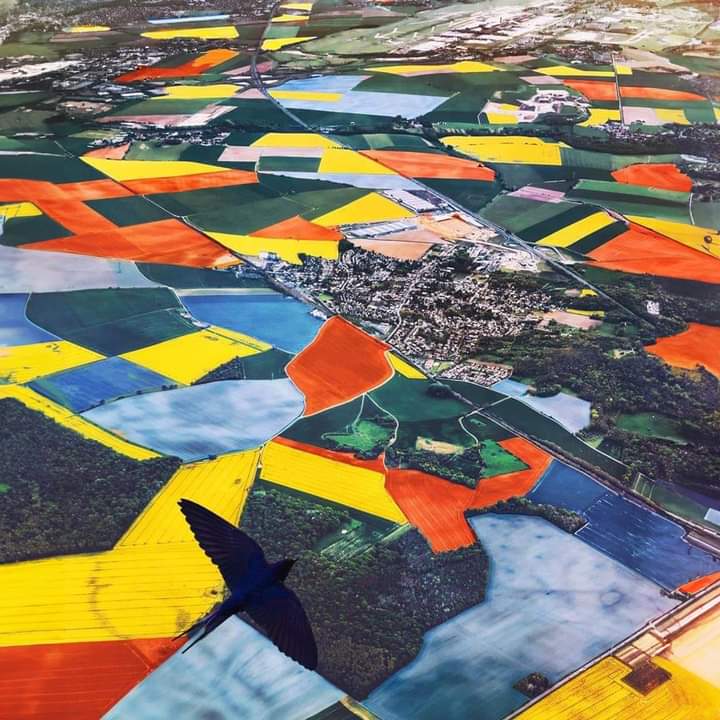
Aerial view of the Netherlands during tulip season is truly breathtaking! From mid-March to mid-May, the landscape transforms into a vibrant sea of colors as millions of tulips bloom. ? The famous...Read more
View (100,431) | Like (0) | Comments (0)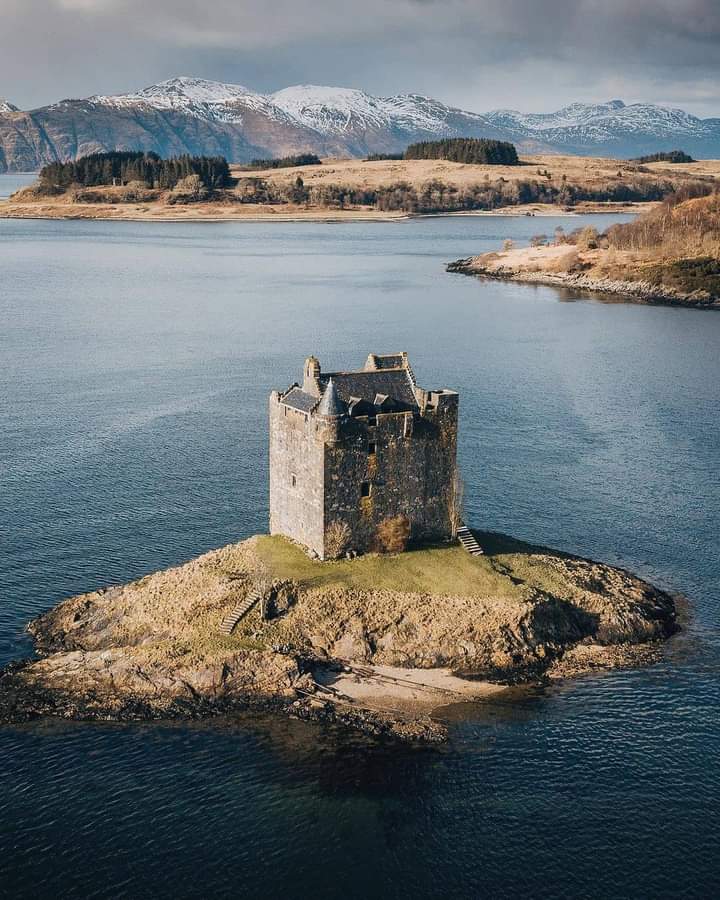
Castle Stalker (Scottish Gaelic: Caisteal an Stalcaire) is a four-storey tower house or keep in the Scottish county of Argyll. It is set on a tidal islet on Loch Laich, an inlet off Loch Linnhe. It is...Read more
View (104,750) | Like (0) | Comments (0)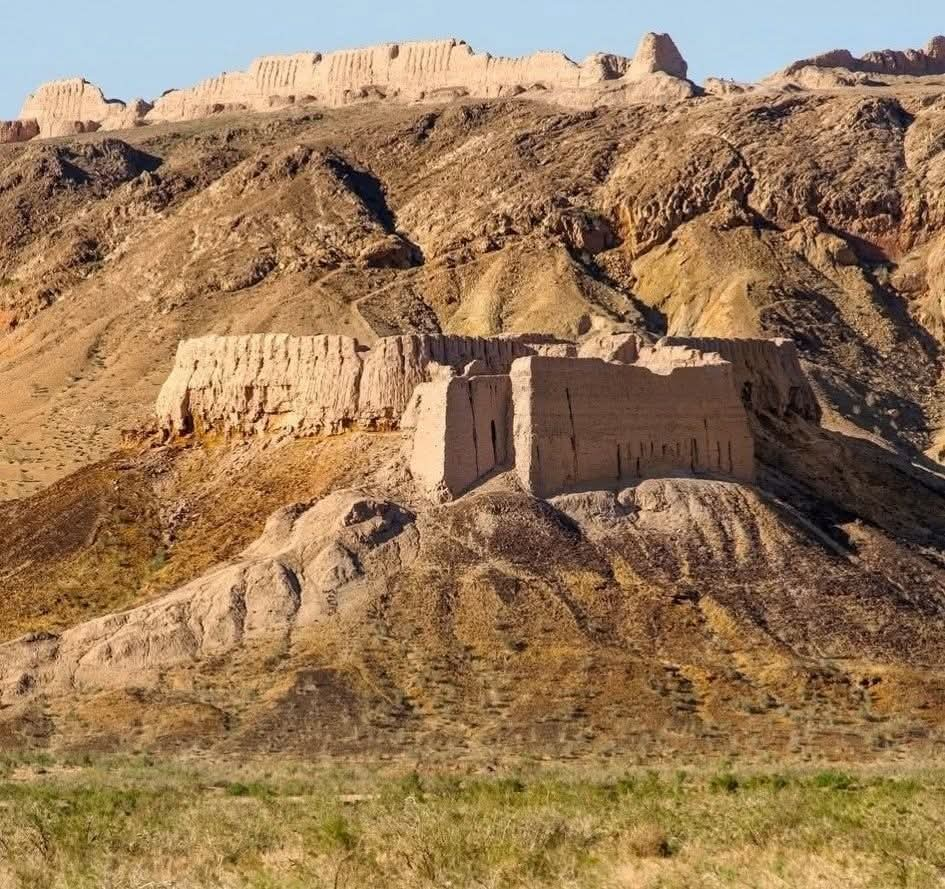
The towering mud-brick walls of the three fortresses at Ayaz-Kala, located in the Khwarezm region of Central Asia, rise dramatically from the surrounding plains. They were built on the edge of the ...Read more
View (14,573) | Like (0) | Comments (0)
In the Berber-speaking town of Matmata in Tunisia, traditional underground dwellings are a remarkable feature of the local architecture. These homes, known as troglodyte houses, are dug into the groun...Read more
View (108,557) | Like (0) | Comments (0)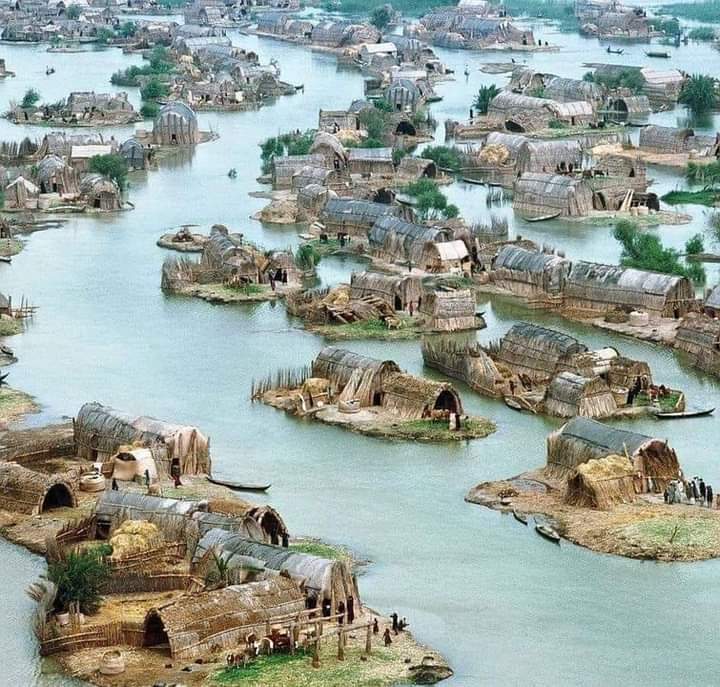
The inspiring story of Marsh Arabs and their amazing sustainable floating homes, This town of floating houses, aka the Garden of Eden, the Mesopotamian Venice, or the Ma’dan, was a wetland area in ...Read more
View (105,025) | Like (0) | Comments (0)
Tianzi Mountain in China. Tianzi Mountain is a mountain in Zhangjiajie in the Hunan Province of China, close to the Suoxi Valley in South Central China. Before the Ming Dynasty, Tianzi Mountain ...Read more
View (9,083) | Like (3) | Comments (0)
The subterranean city of Naours, situated in the Picardy region of France, is an extraordinary labyrinth of tunnels and chambers that dates back to the Middle Ages. Known locally as ❝Les Souterrains...Read more
View (23,440) | Like (0) | Comments (0)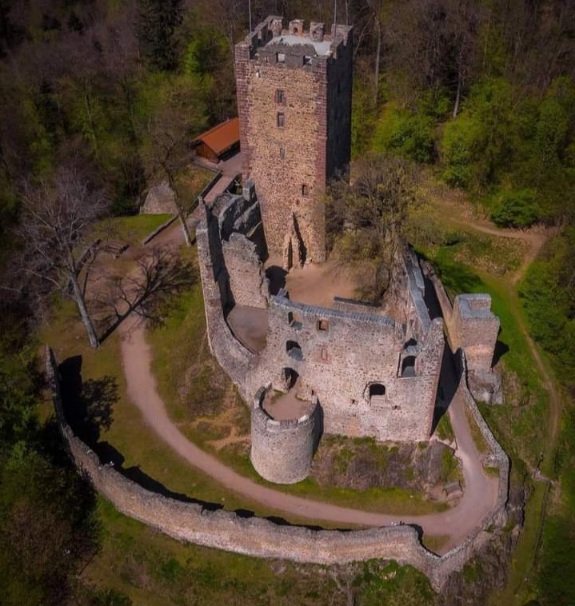
The Kastelburg is a ruined castle above Waldkirch in the district Emmendingen in Baden-Württemberg. The Kastel castle was built between 1260 and 1270 by the Lords of Schwarzenberg. Like the Schwar...Read more
View (102,004) | Like (0) | Comments (0)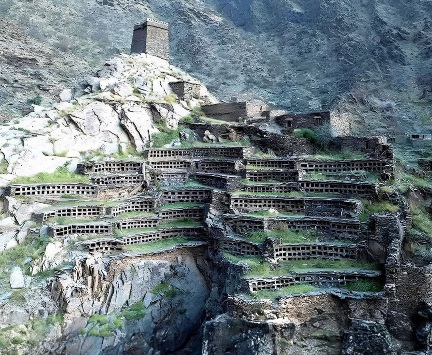
This 800-year-old stone apiary in Saudi Arabia’s Sarawat Mountains once housed around 1,200 beehives, making it a major center for honey production in the medieval era. Built around 1200 AD, its ...Read more
View (33,727) | Like (0) | Comments (0)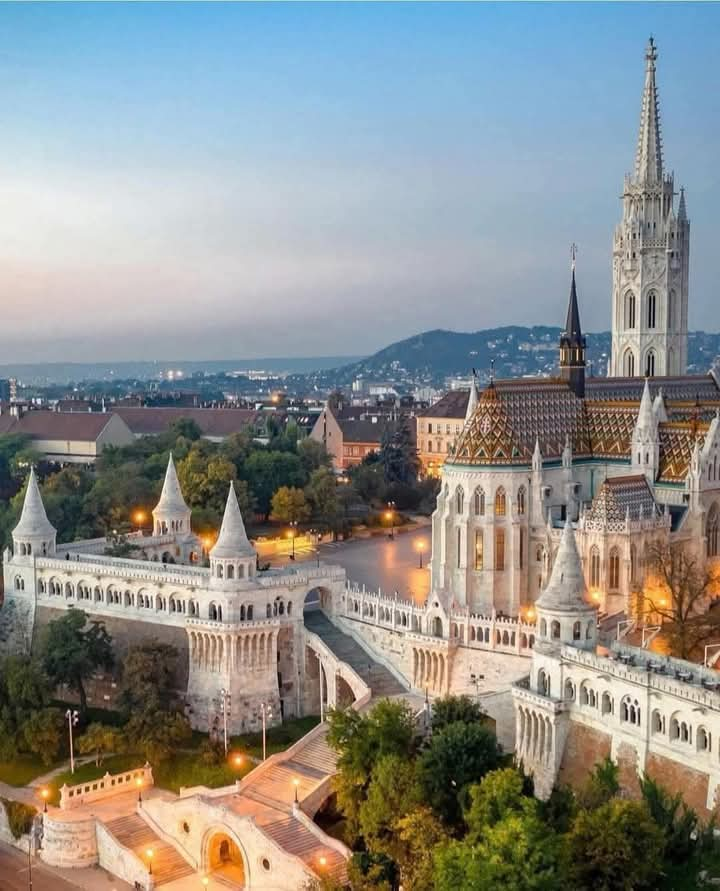
As the first rays of sunlight grace Castle Hill, Fisherman’s Bastion emerges from the morning mist like a vision from a fairytale. Its seven elegant turrets, symbolizing Hungary’s founding trib...Read more
View (89,530) | Like (0) | Comments (0)
ব্যবসা করতে গেলে যা যা শিখতে হবে তাই নিচে দেওয়া হল। ১। সিস্টেমকে বিশ্বাস কর...Read more
View (23,424) | Like (0) | Comments (0)অনেকে ভাবে প্রতিভাই সাফল্যের চাবিকাঠি।কিন্তু বাস্তবে প্রতিভা নয়, নিয়মিতত�...Read more
View (806) | Like (0) | Comments (0)
ভালো রেজাল্ট করলে, টাকা পয়সা হলে, গাড়ি বাড়ি করতে পারলে সেটাকে আমরা জীবনের স�...Read more
View (11,353) | Like (0) | Comments (0)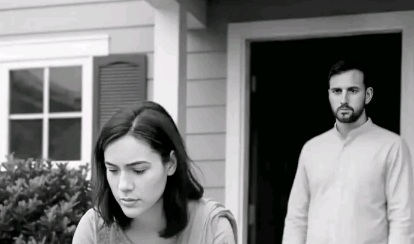
ইসলাম ডিভোর্সের ক্ষমতা নারীকে কেন দেয় নাই তাই নিচে তুলে ধরা হল। তাহলে নারীর�...Read more
View (6,957) | Like (0) | Comments (0)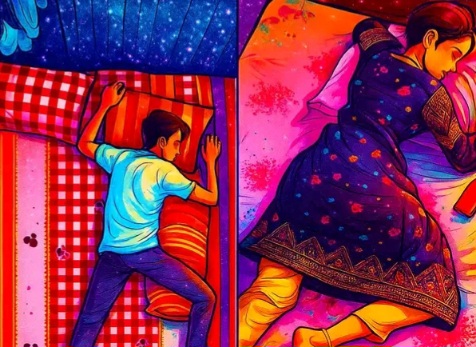
গত ৯ মাসে ২৪৫ জন তালাকপ্রাপ্ত পুরুষ ও মহিলার সাথে কথা বলেছি। তাদের কাছে জেনে...Read more
View (25,103) | Like (0) | Comments (0)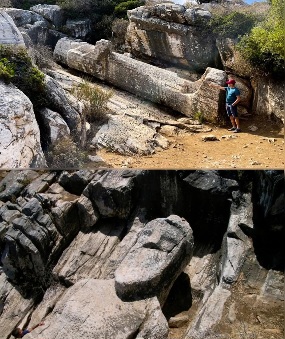
The Kouros of Apollonas—often referred to as the Colossus of Dionysus—is a massive, unfinished marble statue lying in a hillside quarry on the Greek island of Naxos. Dating to the 6th century B...Read more
View (8,446) | Like (0) | Comments (0)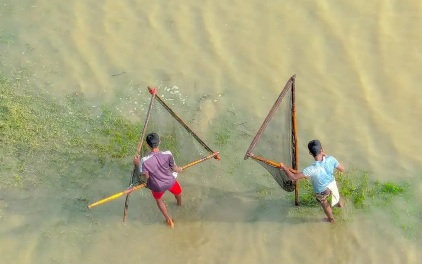
৫০ বছর আগে জন্মাইলে বড় বাচাঁ বেচেঁ যাইতাম। গ্রামে থাকতাম, পুকুরে নেমে ডুব দ�...Read more
View (17,416) | Like (0) | Comments (0)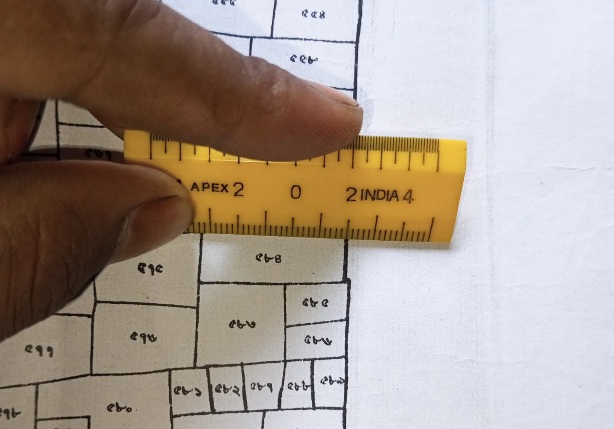
বর্তমান ডিজিটাল যুগে ভূমি জরিপ আর শুধু মেপে খাতায় তোলার কাজ নয়! এটি এখন প্রয�...Read more
View (26,275) | Like (0) | Comments (0)
জীবনে কার পক্ষে দাঁড়াচ্ছেন, কার জন্য লড়ছেন তা ভেবে-মেপে নেবেন। যাকে বাঁচাতে ...Read more
View (1,153) | Like (0) | Comments (0)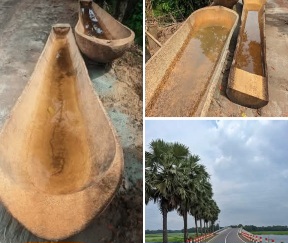
কালিগঞ্জ কাপাশিয়ার দিকে তালগাছ বেশি আবার বিল জলাভূমিও বেশি তাই এই এলাকায় আ�...Read more
View (24,773) | Like (0) | Comments (0)Fewlook is a world wide social media platform